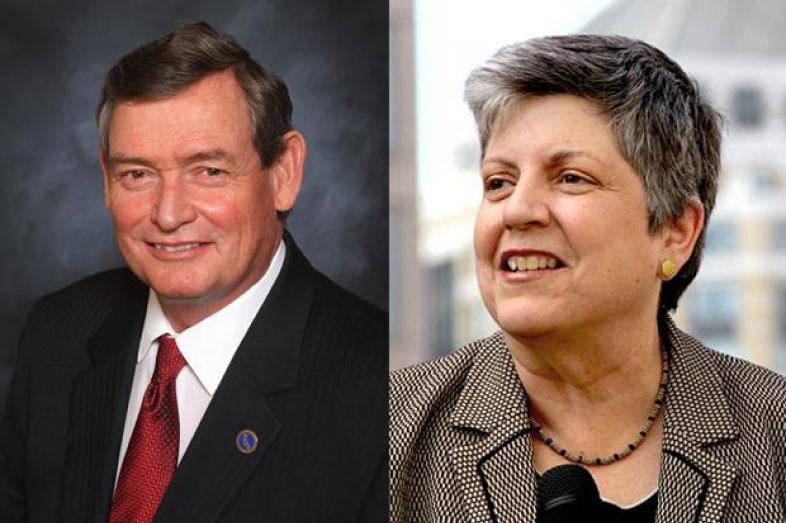

Public university systems have weathered wave after wave of difficulties in recent years – from shrinking state funding streams to intense public scrutiny and criticism – and it’s not likely to get easier anytime soon.
That’s according to the leaders of the two public university systems in California, a state that has long led the way on higher education for the rest of the nation.
Speaking at the Education Writers Association’s 2018 National Seminar, the heads of the University of California and California State University systems said that finances and politics are among the two biggest challenges they face. (For some perspective, the two systems collectively educate a combined 750,000 students, accounting for more than 5 percent of all students in four-year U.S. universities.)
Financial challenges: As a result of the 2008-09 recession, state appropriations for the University of California system were cut by a third, said Janet Napolitano, the president of the 10-campus University of California system. State support still hasn’t fully rebounded, she said. The University of California now gets roughly the same amount from the state as it did in 2000 – but educates about 90,000 more students, she said.
To make up the funding gap, the UC system has raised more money in donations and more than doubled in-state tuition, to about $14,000 a year. Over the same period of time, median family income in the United States rose by only about 18 percent.
Besides costing families more money, financial challenges have made it harder for students to find the classes they need. Already, record numbers of students are coming out of K-12 schools and community colleges in California, noted the chancellor of the California State University System, Timothy White. And the demand for higher education will only grow, he said.
California is projected to need about 1 million more adults with bachelor’s degrees between now and 2030.
The CSU system is trying to add capacity despite its limited funding, but, White said, whenever it addresses one shortage, “we’ve simply just created a bottleneck somewhere else.”
Politics: College leaders in California have faced criticism for missteps in addressing serious issues like sexual assault or free speech.
In addition to what some observers have described as self-inflicted wounds to their public stature, higher education institutions are suffering from the growing political divide. Napolitano pointed to a 2017 survey by the Pew Research Center in which 58 percent of Republicans said they viewed colleges negatively, compared with just 19 percent of Democrats.
“This should be a concern to all higher education leaders,” Napolitano said. (Before leading the UC system, Napolitano served as the U.S. Secretary of Homeland Security under President Barack Obama and was the Democratic governor of Arizona.)
The news media and the public are too often distracted away from what Napolitano argues is a more important reality about higher education.
“When we talk in this country about income inequality and how to fix it — well, there’s no better tried-and-true tactic for addressing income inequality than getting a student through to a college degree,” she said.
The UC campuses “continue to be engines of social mobility,” Napolitano said. Half of graduates leave with no debt, she added.
While federal net price statistics show the average low-income UC freshman is left with a “gap” between grants and what they can afford of more than $8,000, Napolitano said the average debt load of the graduating seniors who do borrow is a total of about $20,000, “the price of a small car.”
Higher education leaders need to keep “trying to make that case for higher education,” Napolitano said. “It just plain needs more public support.”
White said he has found the most effective way to get the message out is to hammer away at simple yet remarkable numbers: Ten percent of the state’s workers have a California State University degree, he said. Ten percent of U.S. teachers are CSU graduates.
“Those kinds of sound bites get attention,” White said.


